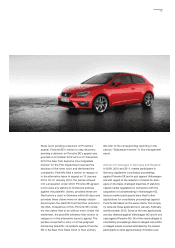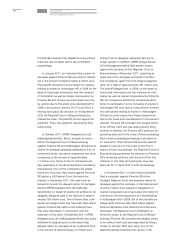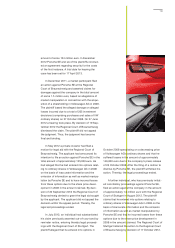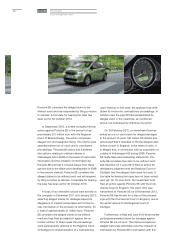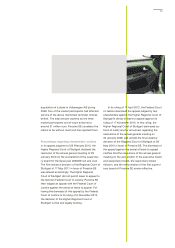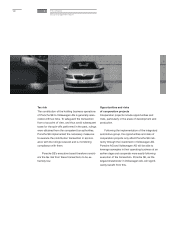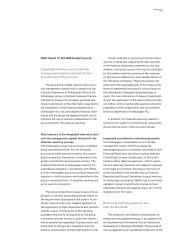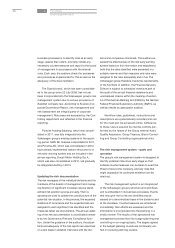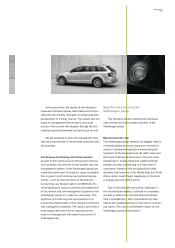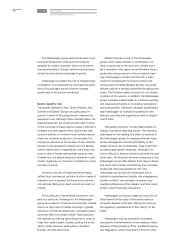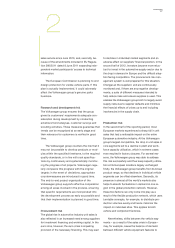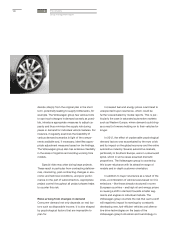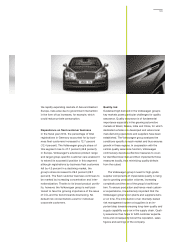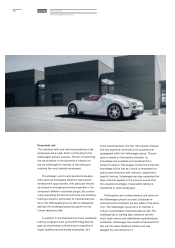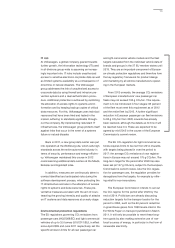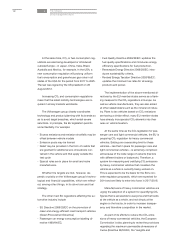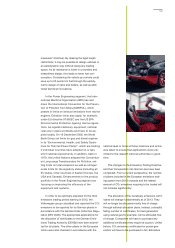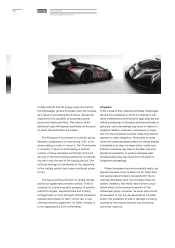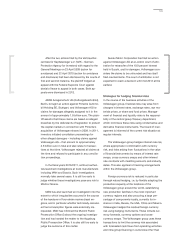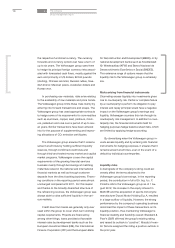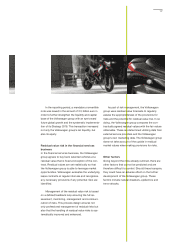Porsche 2012 Annual Report Download - page 131
Download and view the complete annual report
Please find page 131 of the 2012 Porsche annual report below. You can navigate through the pages in the report by either clicking on the pages listed below, or by using the keyword search tool below to find specific information within the annual report.
sales service since June 2010, and, secondly, be-
cause of the amendments included in EU Regula-
tion 566/2011 dated 8 June 2011 expanding inde-
pendent market participants’ access to technical
information.
The European Commission is planning to end
design protection for visible vehicle parts. If this
plan is actually implemented, it could adversely
affect the Volkswagen group’s genuine parts
business.
Research and development risk
The Volkswagen group ensures that the group
gives its customers’ requirements adequate con-
sideration during development by conducting
extensive trend analyses, customer surveys and
scouting activities. These measures guarantee that
trends can be recognized at an early stage and
their relevance for customers is verified in good
time.
The Volkswagen group counters the risk that it
may not be possible to develop products or mod-
ules within the specified timeframe, to the required
quality standards, or in line with cost specifica-
tions by continuously and systematically monitor-
ing the progress of all projects. Volkswagen regu-
larly compares this progress with the original
targets; in the event of deviations, appropriate
countermeasures are introduced in good time.
The end-to-end project organization of the
Volkswagen group supports effective cooperation
among all areas involved in the process, ensuring
that specific requirements are incorporated into
the development process as early as possible and
that their implementation is planned in good time.
Procurement risk
The global rise in automotive industry unit sales is
also reflected in an increased need among suppliers
for investment financing and working capital. In the
euro zone, however, the euro crisis is impeding
provision of the necessary financing. This may lead
to declines in individual market segments and an
adverse effect on suppliers’ financial position. In the
second half of 2012, investors became more reluc-
tant to invest in the automotive supply sector due to
the drop in demand in Europe and the difficult situa-
tion facing competitors. The procurement risk man-
agement system is well prepared for this situation.
Changes at the suppliers’ end are continuously
monitored and, if there are any negative develop-
ments, a suite of different measures intended to
help reduce risks and ensure supplies is used. This
enables the Volkswagen group both to largely avoid
supply risks due to supplier defaults and minimize
the financial effects of crises up to and including
insolvencies in the supply chain.
Production risk
In the second half of the reporting period, most
European markets experienced a sharp fall in unit
sales that had a noticeable impact on the entire
European automotive industry. At the Volkswagen
group’s largest competitors, the drop in unit sales in
core segments led to a decline in plant and work-
force capacity utilization, which in extreme cases
even resulted in factory closures. For several rea-
sons, the Volkswagen group was able to address
this risk successfully and thus keep capacity utiliza-
tion at its European locations largely unchanged:
firstly, the Volkswagen group benefits from its broad
product range, so that declines in individual vehicle
segments can be offset elsewhere. Secondly, its
presence in almost all the world’s markets also
helps to absorb fluctuations in demand in one re-
gion in the global production network. However,
these two factors can only come into play as a
result of the flexible production network, which uses
turntable concepts, for example, to distribute pro-
duction volumes evenly and hence minimize the
impact on individual sites. This applies to both
vehicle and component factories.
Nevertheless, shifts between the vehicle seg-
ments – as a result of the sales crisis in Europe –
may, for example, cause the balance of demand
between different vehicle equipment features to
127


